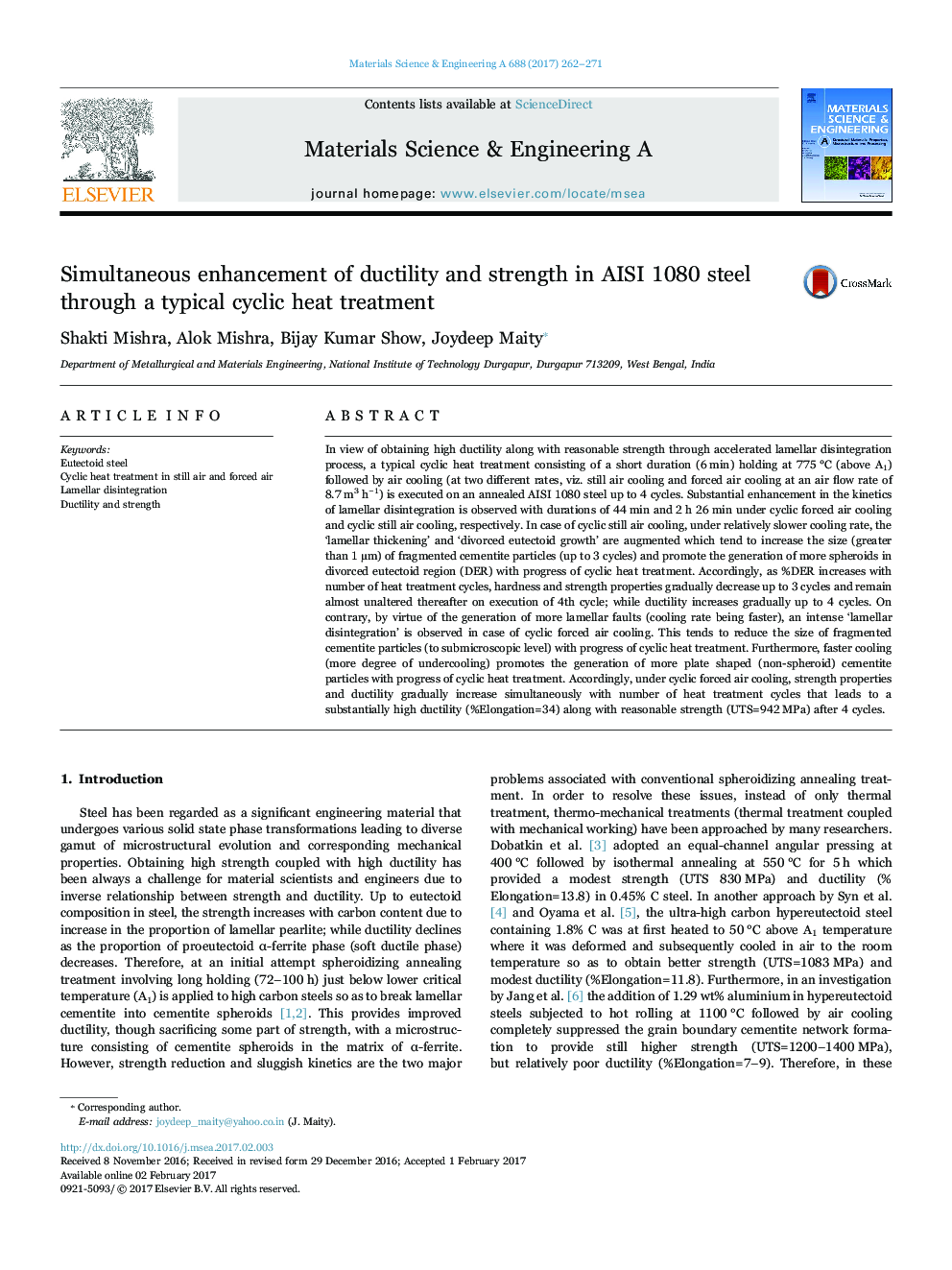| Article ID | Journal | Published Year | Pages | File Type |
|---|---|---|---|---|
| 5456197 | Materials Science and Engineering: A | 2017 | 10 Pages |
Abstract
In view of obtaining high ductility along with reasonable strength through accelerated lamellar disintegration process, a typical cyclic heat treatment consisting of a short duration (6 min) holding at 775 °C (above A1) followed by air cooling (at two different rates, viz. still air cooling and forced air cooling at an air flow rate of 8.7 m3 hâ1) is executed on an annealed AISI 1080 steel up to 4 cycles. Substantial enhancement in the kinetics of lamellar disintegration is observed with durations of 44 min and 2 h 26 min under cyclic forced air cooling and cyclic still air cooling, respectively. In case of cyclic still air cooling, under relatively slower cooling rate, the 'lamellar thickening' and 'divorced eutectoid growth' are augmented which tend to increase the size (greater than 1 µm) of fragmented cementite particles (up to 3 cycles) and promote the generation of more spheroids in divorced eutectoid region (DER) with progress of cyclic heat treatment. Accordingly, as %DER increases with number of heat treatment cycles, hardness and strength properties gradually decrease up to 3 cycles and remain almost unaltered thereafter on execution of 4th cycle; while ductility increases gradually up to 4 cycles. On contrary, by virtue of the generation of more lamellar faults (cooling rate being faster), an intense 'lamellar disintegration' is observed in case of cyclic forced air cooling. This tends to reduce the size of fragmented cementite particles (to submicroscopic level) with progress of cyclic heat treatment. Furthermore, faster cooling (more degree of undercooling) promotes the generation of more plate shaped (non-spheroid) cementite particles with progress of cyclic heat treatment. Accordingly, under cyclic forced air cooling, strength properties and ductility gradually increase simultaneously with number of heat treatment cycles that leads to a substantially high ductility (%Elongation=34) along with reasonable strength (UTS=942 MPa) after 4 cycles.
Keywords
Related Topics
Physical Sciences and Engineering
Materials Science
Materials Science (General)
Authors
Shakti Mishra, Alok Mishra, Bijay Kumar Show, Joydeep Maity,
